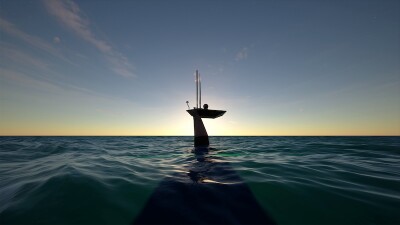Sometimes I think I understand government speak and sometimes I don’t. A recent case indicates that the latter is probably true. At the center of my lack of understanding is the new Coast Guard interim OSV size rule. Immediately below is a short synopsis of the reason for and intent of the rule, verbatim from the U.S. Coast Guard, followed by a bit of commentary.
“In late 2010, Congress removed the statutory size limit on offshore supply vessels (OSVs) and directed the Coast Guard to issue regulations “to ensure the safe carriage of oil, hazardous substances, and individuals in addition to the crew” on OSVs exceeding the previous size limit, taking “into consideration the characteristics of offshore supply vessels, their methods of operation, and their service in support of exploration, exploitation, or production of offshore mineral or energy resources.”
As is explained below, developments in the U.S. offshore industry created demand for larger OSVs than previously were allowed, and safely increasing the size of OSVs requires modifications to existing OSV regulations in order to address hazards associated with larger vessels carrying more cargo and personnel. Accordingly, the Coast Guard developed this interim rule to address safety and environmental hazards associated with larger OSVs. This interim rule is authorized and required by section 617 of the Coast Guard Authorization Act of 2010 (Pub. L. 111-281) (the Act).”
Major requirements under the rule include:
- Large OSVs must hold certain international certificates, including Convention for the Safety of Life at Sea, 1974, as amended (SOLAS) and Convention for the Prevention of Pollution from Ships (MARPOL 73/78) certificates, even if the OSV is certificated to operate only in U.S. waters.
- Large OSVs must meet the marine engineering requirements of 46 CFR subchapter F and the electrical engineering requirements of 46 CFR subchapter J, without the exceptions made for other OSVs, because of the increased capacity of large OSVs and the corresponding increase in the potential consequences of an incident involving a large OSV.
- This rule allows a large OSV to carry more than 36 offshore workers if the OSV meets stability, marine engineering, fire protection, and lifesaving provisions set forth in this interim rule.
The requirements are all understood and, generally, acceptable. It’s what they are supposed to accomplish that leaves me wondering. Specifically, and this is according to the Coast Guard, it's the below:
- This rule is not economically significant. We (USCG) anticipate this rule will not result in additional costs to industry or government. Because of the previous size limit on OSVs, there currently are no U.S.-flagged vessels of at least 6,000 GT ITC or 500 GRT operating as OSVs and certificated under Subchapter L requirements. Consequently, this rule will not directly impact any existing population of U.S.-flagged vessels.
- Furthermore, the interim rule is based upon existing regulatory and technical standards from Titles 33 and 46 of the Code of Federal Regulations (CFR). Where existing regulations and technical standards do not account for the scale of operations of large OSVs, the Coast Guard supplemented them with standards from the International Maritime Organization (IMO) Conventions, and industry consensus engineering standards. Owners and operators would comply with these standards even in the absence of this rule, in order to compete for international work. Therefore, no additional costs will be incurred by industry in the construction and the operation of a large U.S.-flagged OSV.
To summarize, the U.S. Coast Guard has issued a rule that a) is of no economic consequence (a good thing) but only because it doesn’t apply to any current U.S.-flagged vessels and, b) is based on existing regulations supplemented by IMO Conventions that OSV owners and operators are already planning to comply with in larger newbuilds.
Maybe I missed something. Perhaps it’s the slew of international vessels over 6,000 GT operating U.S. waters or perhaps the impending flood of 7,000–8,000-GT OSVs in the Gulf, but I just can’t get my mind around this one. But, since it doesn’t apply to current U.S.-flagged vessels and is already in force under international maritime standards, it’s probably not worth worrying about.




